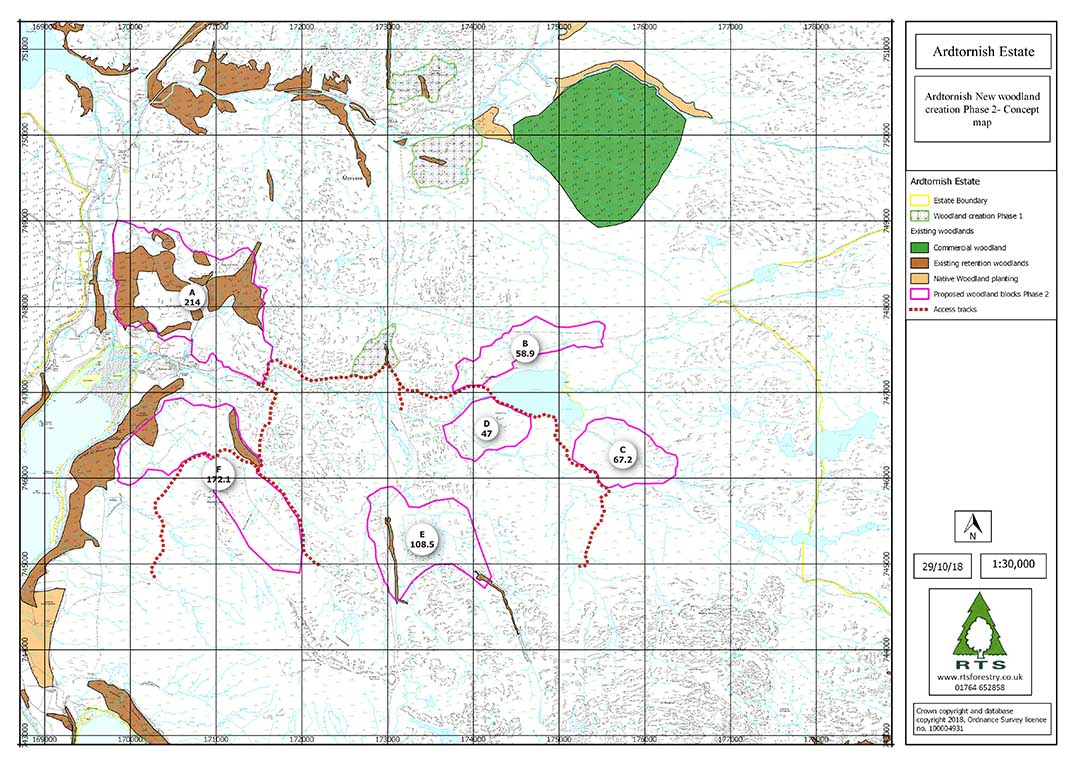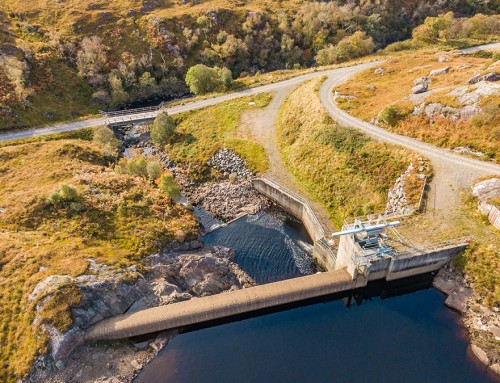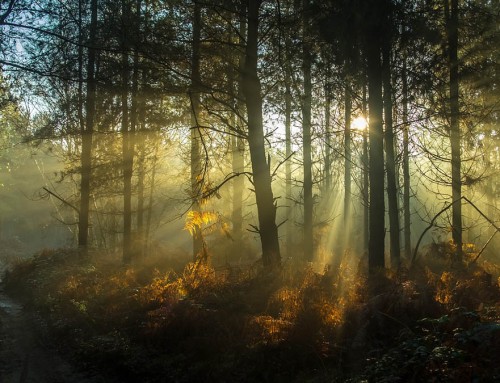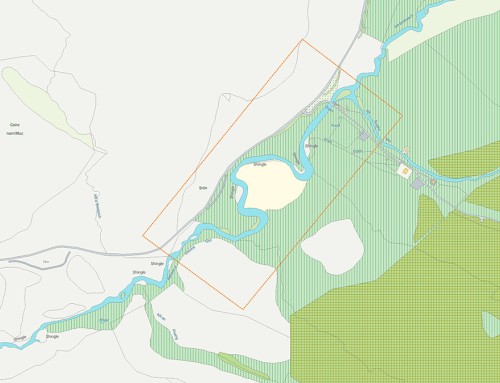Ardtornish Estate – Woodland Creation Programme – Phase 2
Introduction
In accordance with the best practice guidelines relating to stakeholder engagement, Ardtornish hereby invites you to comment on its plans to further increase native woodland cover on the estate, building on phase 1 which is nearing completion.
Phase 2 will expand, regenerate and connect our native broadleaf cover in the heart of the estate by creating up to six new woodlands and enclosing existing woodlands during 2019-21. In total 667 hectares will be enclosed, comprising 196 hectares of new trees, 100 hectares of existing mature woods and 371 hectares of remnant pockets of scrub woodland with associated open ground.
As well as farm and deer management considerations, a suite of environmental (peat depth & ground water conditions) and ecological (breeding birds & vegetation) surveys have been undertaken to inform the site selection process. Archaeology, landscape impact and public access are also being taken in to consideration.
Whilst the total size of the enclosed areas in relation to the volume of new planting might appear disproportionate, the scheme is designed to maximise the protection afforded to existing native woodlands, including riparian habitats, by encouraging extensive natural regeneration.
Compartment A is located to the north of Ardtornish House. Compartments B, C and D are located around Loch Tearnait. Compartments E and F are located on the south east face of Achranich hill.
Click map for larger image
Woodland Design
The woodlands are designed in accordance with best practice contained in UK Forest Standards and native woodland creation guidelines.
Planting densities will average 1,600 trees/ha, with higher planting densities on better ground.
Seed sources from Ardtornish or as close to Ardtornish as possible, made up of Woodland NVC (National Vegetation Classification) Type W9 (Very Suitable), will be used. Species will include rowan, oak, birch, holly and hawthorn.
Fencing will be important to protect against deer and stock. Public access arrangements will be considered carefully.
Ground preparation will be mounding by excavator; inverted mounding on better free-draining soils, hinge mounding on wetter ground. This method will best enable the trees to establish in the local soil conditions.
Fertiliser (P & K) to aid establishment will be applied when the trees are planted.
Chemical and hand weeding will be undertaken as required in order to control seasonal/annual weeds. Additional fertilizer may be applied in years 4 or 5 to assist tree growth. Monitoring and management will be ongoing.
Continuous deer management will be the responsibility of the estate’s deer manager.
Feedback
We’d be very grateful if you could provide us with feedback by 25Th November 2018.
All your comments and suggestions will be considered as our plans progress.
Please do not hesitate to contact me by email or phone if you have any specific questions or concerns you would like to raise.
Veronica Llorente
Veronica.llorente@rts.ltd.uk
Tlf: 01764 652858/ Mobile: 07867 454235
Earnside House, Muthill Road
Crieff PH7 4DH, Scotland








